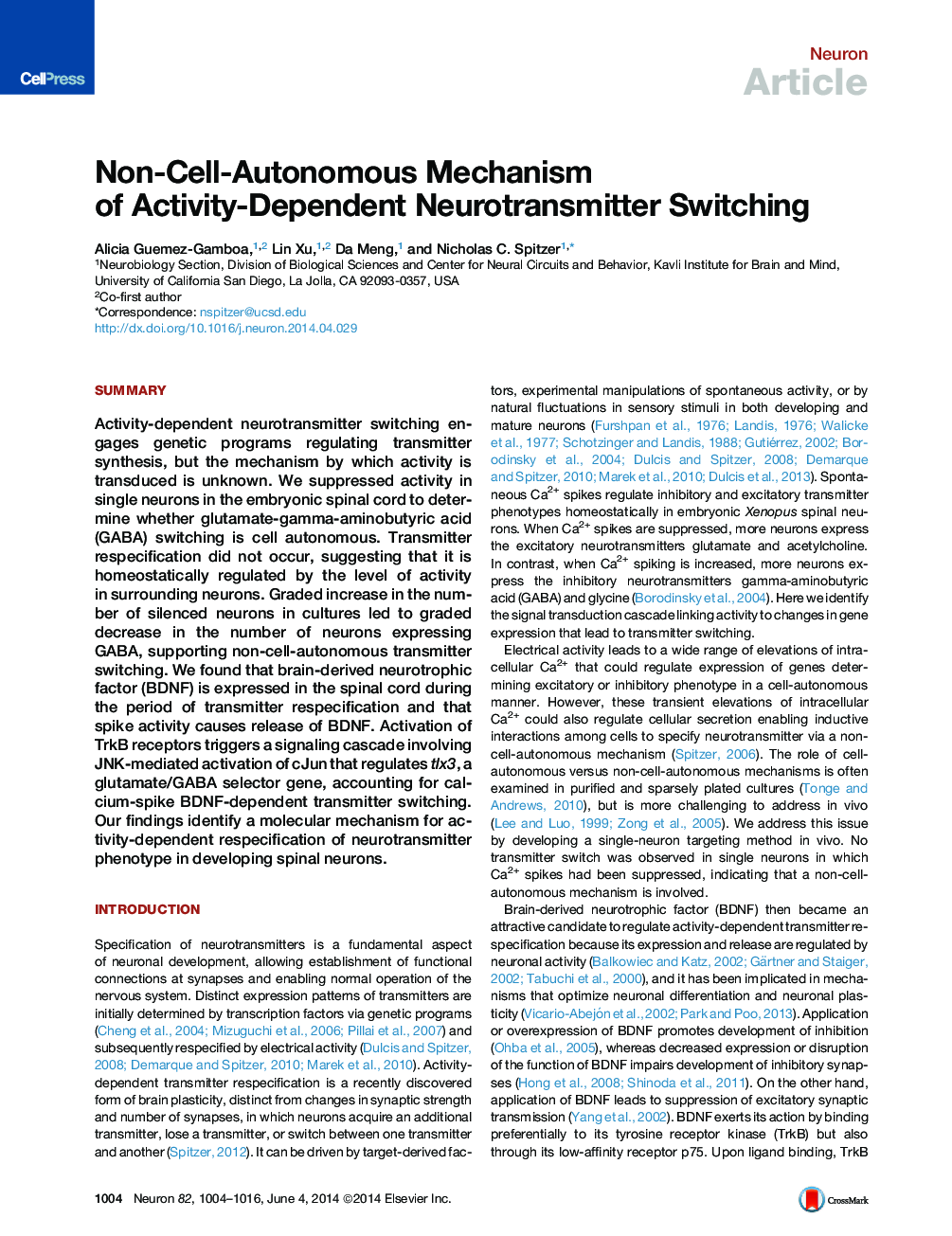| کد مقاله | کد نشریه | سال انتشار | مقاله انگلیسی | نسخه تمام متن |
|---|---|---|---|---|
| 4321054 | 1291566 | 2014 | 13 صفحه PDF | دانلود رایگان |
• Suppressing Ca2+ spikes in single neurons does not cause transmitter switching
• Ca2+ spikes stimulate release of BDNF
• BDNF drives JNK-dependent phosphorylation of cJun that regulates tlx3 expression
• BDNF regulates glutamate/GABA switching
SummaryActivity-dependent neurotransmitter switching engages genetic programs regulating transmitter synthesis, but the mechanism by which activity is transduced is unknown. We suppressed activity in single neurons in the embryonic spinal cord to determine whether glutamate-gamma-aminobutyric acid (GABA) switching is cell autonomous. Transmitter respecification did not occur, suggesting that it is homeostatically regulated by the level of activity in surrounding neurons. Graded increase in the number of silenced neurons in cultures led to graded decrease in the number of neurons expressing GABA, supporting non-cell-autonomous transmitter switching. We found that brain-derived neurotrophic factor (BDNF) is expressed in the spinal cord during the period of transmitter respecification and that spike activity causes release of BDNF. Activation of TrkB receptors triggers a signaling cascade involving JNK-mediated activation of cJun that regulates tlx3, a glutamate/GABA selector gene, accounting for calcium-spike BDNF-dependent transmitter switching. Our findings identify a molecular mechanism for activity-dependent respecification of neurotransmitter phenotype in developing spinal neurons.
Journal: - Volume 82, Issue 5, 4 June 2014, Pages 1004–1016
